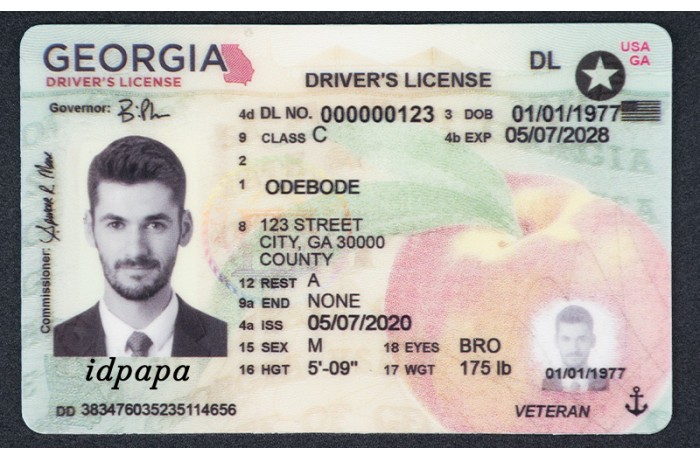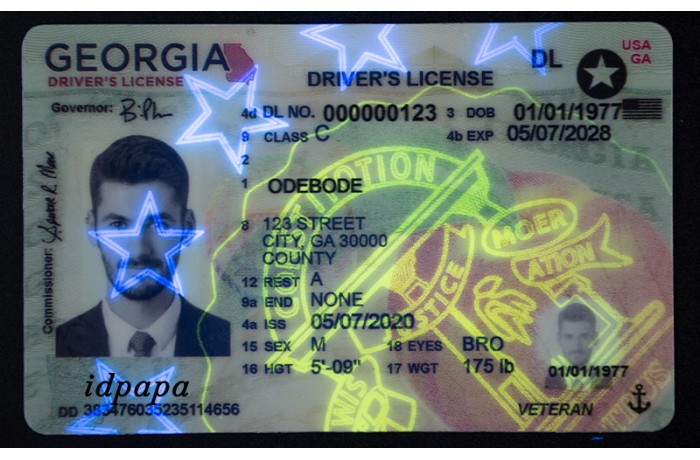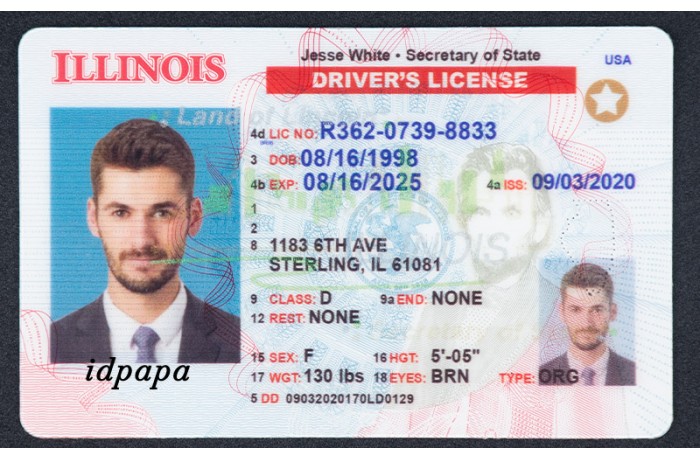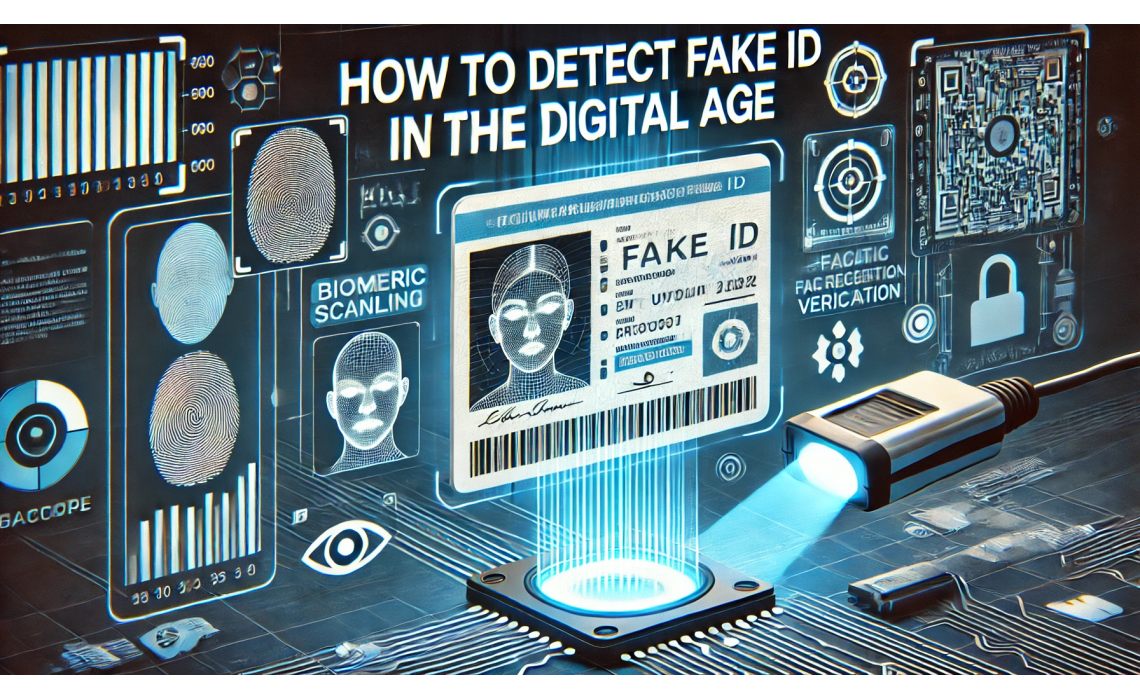How to Detect Fake IDs in the Digital Age
How to Detect Fake IDs in the Digital Age

In today's digital era, identity verification has become more sophisticated. Governments, businesses, and security agencies have implemented advanced security measures to combat fraudulent identification. However, as security technology advances, so do the methods used to create fake IDs.
Detecting fake IDs has become a critical skill for law enforcement, businesses, and institutions that rely on identity verification to maintain security and compliance. Whether it’s a nightclub, bank, airport, or online service, ensuring the authenticity of an ID is crucial.
This article explores modern techniques used to detect fake IDs, the latest technologies in digital authentication, and the risks associated with fraudulent identification in the digital age.
1. Understanding Fake IDs in the Digital Age
A fake ID is any identification document that has been altered, forged, or fabricated to misrepresent someone’s identity, age, or legal status. Fake IDsshop are commonly used for:
●Underage access to nightclubs, bars, and casinos.
●Identity fraud in financial and banking services.
●Bypassing travel restrictions at airports and border control.
●Gaining unauthorized access to restricted areas.
In the digital age, fraudsters use sophisticated methods to create fake IDs that look authentic. To combat this, businesses and institutions must stay ahead by employing advanced detection techniques.
2. Physical Features That Help Detect Fake IDs

Even with the rise of digital verification, physical examination of an ID card remains an essential first step in detecting fraud. Here are key signs to look for:
✅ Holograms and Watermarks
●Genuine IDs contain holographic overlays that shift colors when tilted.
●Fake IDs often use printed images of holograms, which do not reflect light properly.
●Watermarks embedded in government-issued IDs are visible under specific lighting conditions.
✅ Microprinting and Fine Line Details
●Many real IDs contain microscopic text or patterns that counterfeiters struggle to replicate.
●Using a magnifying glass can help reveal discrepancies in micro printed text.
✅ UV (Ultraviolet) and Infrared Features
●Government IDs contain hidden UV features that glow under blacklight.
●Some real IDs have infrared markings that are visible only under special scanners.
●Fake IDs often lack these embedded security features or have poor imitations.
✅ Texture and Raised Print
●Real IDs have raised text, embossing, or laser-engraved details that can be felt.
●Fake IDs usually feel too smooth or lack tactile authenticity.
✅ Lamination and Card Edges
●Official IDs have seamless lamination, whereas fake IDs may show signs of peeling or bubbling.
●Counterfeit cards often have inconsistent edge thickness or poor-quality materials.
3. Advanced Technology for Detecting Fake IDs
Modern ID verification relies on digital and biometric technology to ensure authenticity. The following tools and methods help detect fraudulent IDs:
✅ Barcode and QR Code Scanners
●Most government IDs have barcodes or QR codes that store encrypted information.
●Fake IDs often have barcodes that do not scan or return invalid data.
●Businesses and security agencies use ID scanning software to match barcode information with official databases.
✅ Optical Character Recognition (OCR)
●OCR technology scans text and images on an ID and compares them to official ID templates.
●Any mismatch in font, spacing, or alignment raises fraud suspicion.
✅ AI-Powered Facial Recognition
●AI-driven facial recognition systems compare ID photos to real-time images.
●Many airports, financial institutions, and government agencies use biometric scanning to verify ID legitimacy.
✅ RFID and NFC Scanning
●Many modern IDs contain RFID (Radio Frequency Identification) or NFC (Near Field Communication) chips.
●If an RFID-enabled ID fails to transmit data to a scanner, it may indicate tampering or forgery.
✅ Document Authentication Software
●Software like ID Analyzer, IDScan.net, and VeriDoc cross-check ID details against global ID databases.
●These tools detect inconsistencies in security features, fonts, and expiration dates.
4. Online Identity Verification Techniques
With the rise of digital identity fraud, businesses and governments are adopting online verification methods to confirm identity authenticity.
✅ Multi-Factor Authentication (MFA)
●MFA requires users to provide multiple proofs of identity, such as:
○A government-issued ID scan
○A real-time selfie for biometric comparison
○A one-time verification code sent to the user’s phone or email
●This method reduces the chances of identity fraud.
✅ Blockchain-Based ID Verification
●Blockchain technology ensures that identity records cannot be tampered with.
●Countries like Estonia have implemented digital national ID systems secured by blockchain.
✅ AI-Powered ID Forgery Detection
●AI can analyze thousands of ID templates to detect anomalies in real-time.
●Deep learning algorithms can recognize fake document templates and alterations.
5. Sectors Most Vulnerable to Fake ID Fraud
Fake IDs are a significant security risk in various industries. Here are sectors most affected by fraudulent identification:
✅Nightclubs, Bars, and Casinos
●Fake IDs are frequently used to bypass age restrictions.
●Many clubs use ID scanners with biometric verification to prevent underage entry.
✅ Banking and Financial Services
●Fake IDs are used for loan fraud, money laundering, and unauthorized transactions.
●Banks rely on AI-driven ID verification tools to detect fraud.
✅ Airports and Border Control
●Governments use facial recognition and biometric passports to prevent identity fraud.
●Fake passports and visas are detected using forensic document examination tools.
✅Employment and Background Checks
●Fake IDs are sometimes used to bypass work authorization laws.
●Companies conduct digital ID verification and reference checks to confirm identity.
6. Best Practices for Businesses and Individuals

✅ How Businesses Can Prevent Fake ID Use
●Train employees to recognize ID security features.
●Invest in ID scanning software and biometric verification tools.
●Report suspected fake IDs to law enforcement.
✅ Tips for Individuals to Protect Their IDs
●Keep government IDs in a secure location.
●Avoid sharing personal ID details on unverified websites.
●Use two-step authentication for digital identity protection.
7. Future Trends in ID Verification
As fake ID technology advances, so do countermeasures. Here are emerging trends:
●AI-Driven Deepfake Detection – Prevents digital identity manipulation.
●Blockchain-Based Digital IDs – Ensures fraud-proof digital identity storage.
●Biometric Authentication for Online Transactions – Eliminates ID forgery risks in banking and e-commerce.
Conclusion
Detecting fake IDs in the digital age requires a combination of physical inspection, advanced technology, and biometric authentication. As fraudsters become more sophisticated, businesses and governments must stay ahead with AI-driven ID verification, machine learning fraud detection, and blockchain security.
By understanding the latest techniques in fake ID detection, organizations can enhance security, prevent fraud, and ensure trust in identity verification processes.


